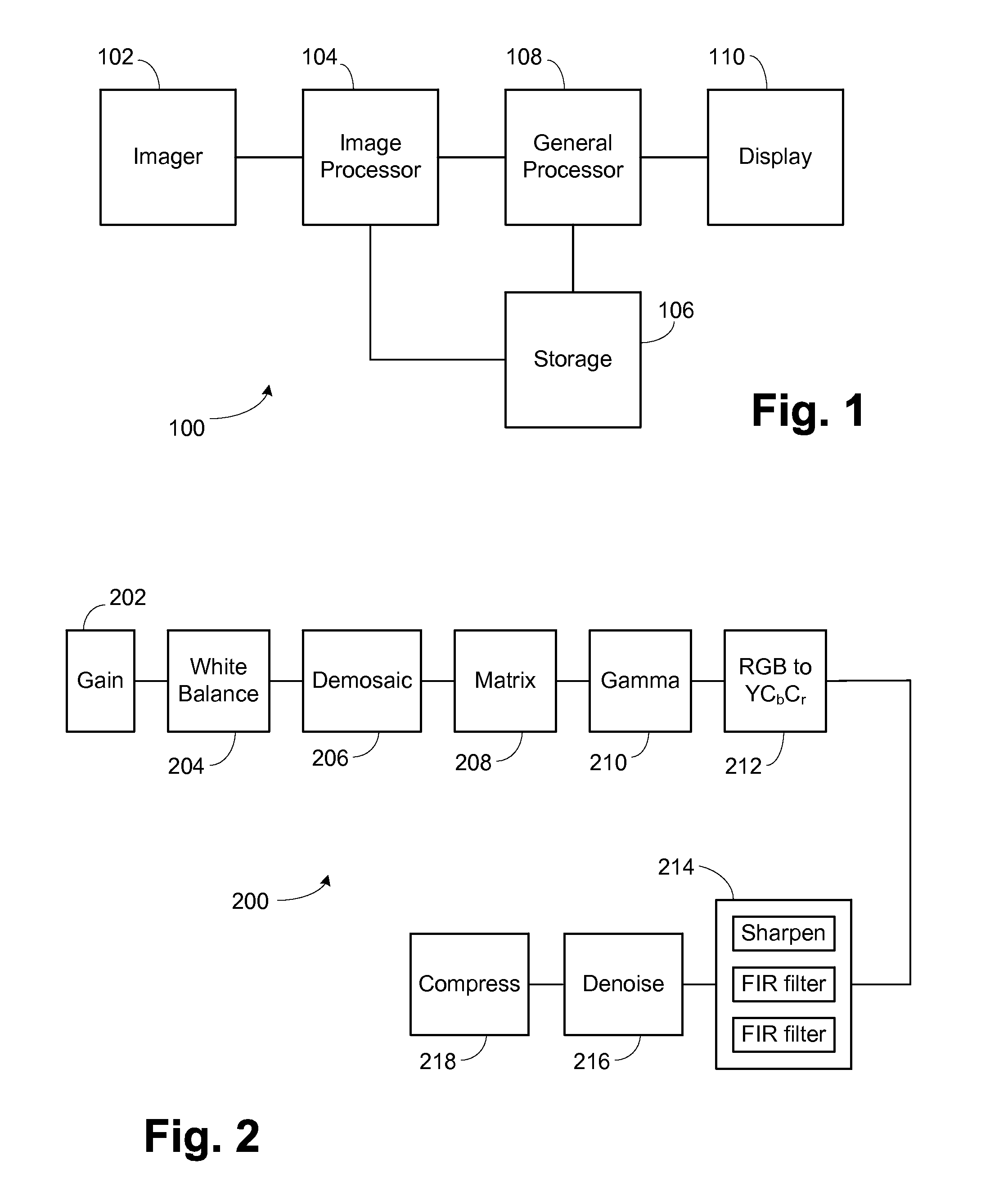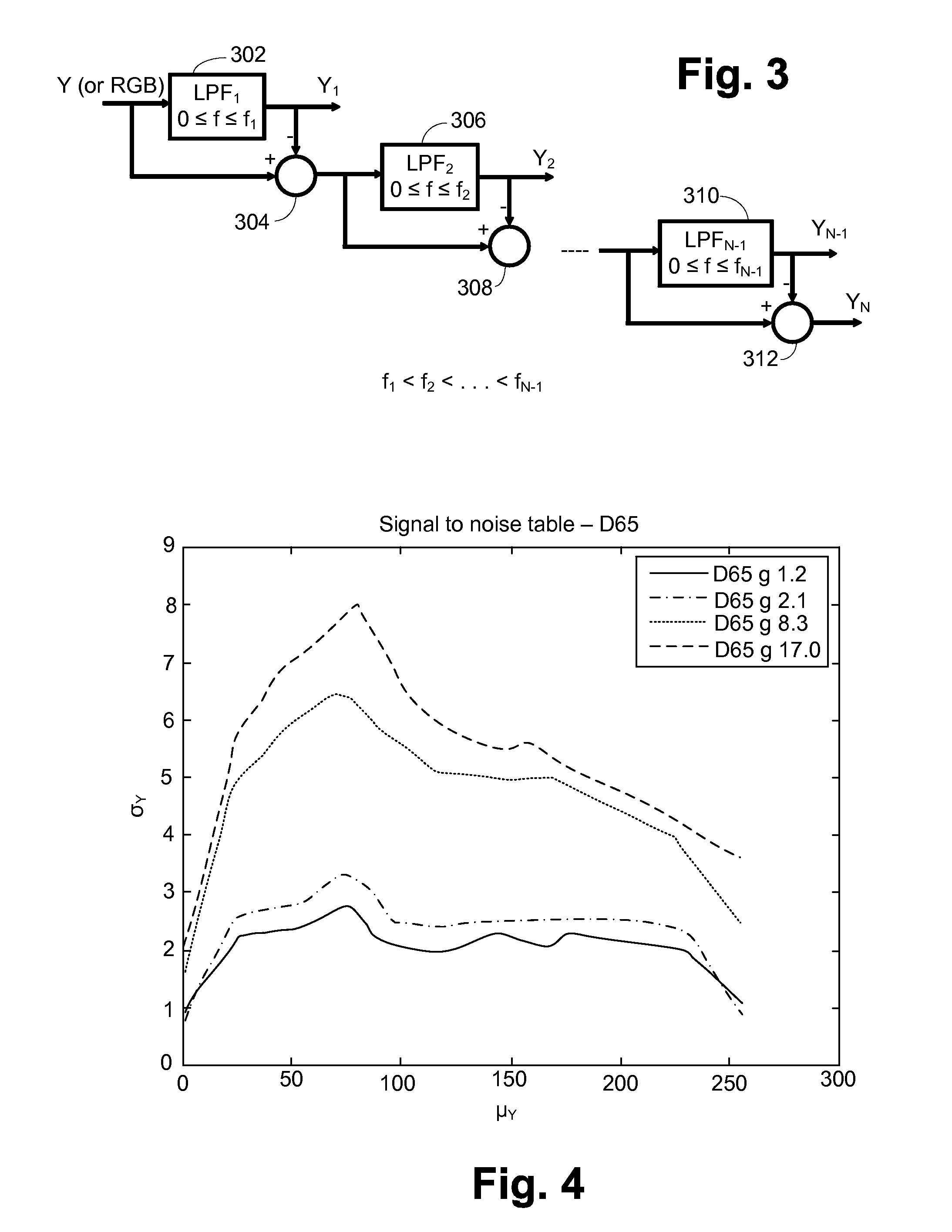Method of and Apparatus for Image Enhancement
a technology of image enhancement and apparatus, applied in the field of image processing, can solve the problems of deteriorating signal to noise ratio, low electron well capacity, and a noise reduction algorithm that is typically a few generations old, and achieves noise reduction, noise reduction, and improved sharpness and masking of image processing pipeline artifacts.
- Summary
- Abstract
- Description
- Claims
- Application Information
AI Technical Summary
Benefits of technology
Problems solved by technology
Method used
Image
Examples
Embodiment Construction
[0020]FIG. 1 is a block diagram of an exemplary device 100, such as a camera or phone. An imager 102, as typical in such devices, is connected to an image processor 104. The image processor 104 is connected to storage106 for both processing storage and longer term storage after completion of processing. The image processor 104 is also connected to a general processor 106 which performs more general duties. The general processor 108 is connected to a display no for providing a user the ability to view the current or previously stored images which the general processor 108 retrieves from storage 106. Storage 106 also stores the firmware and other software used by the image processor 104 and general processor 106 that perform the preferred embodiments. This is a very general overview and many variations can be developed, such as combining the image processor and general processor or forming the image processor using hardware, FPGAs, or programmed DSPs or some combination, as known to t...
PUM
 Login to View More
Login to View More Abstract
Description
Claims
Application Information
 Login to View More
Login to View More - R&D
- Intellectual Property
- Life Sciences
- Materials
- Tech Scout
- Unparalleled Data Quality
- Higher Quality Content
- 60% Fewer Hallucinations
Browse by: Latest US Patents, China's latest patents, Technical Efficacy Thesaurus, Application Domain, Technology Topic, Popular Technical Reports.
© 2025 PatSnap. All rights reserved.Legal|Privacy policy|Modern Slavery Act Transparency Statement|Sitemap|About US| Contact US: help@patsnap.com



